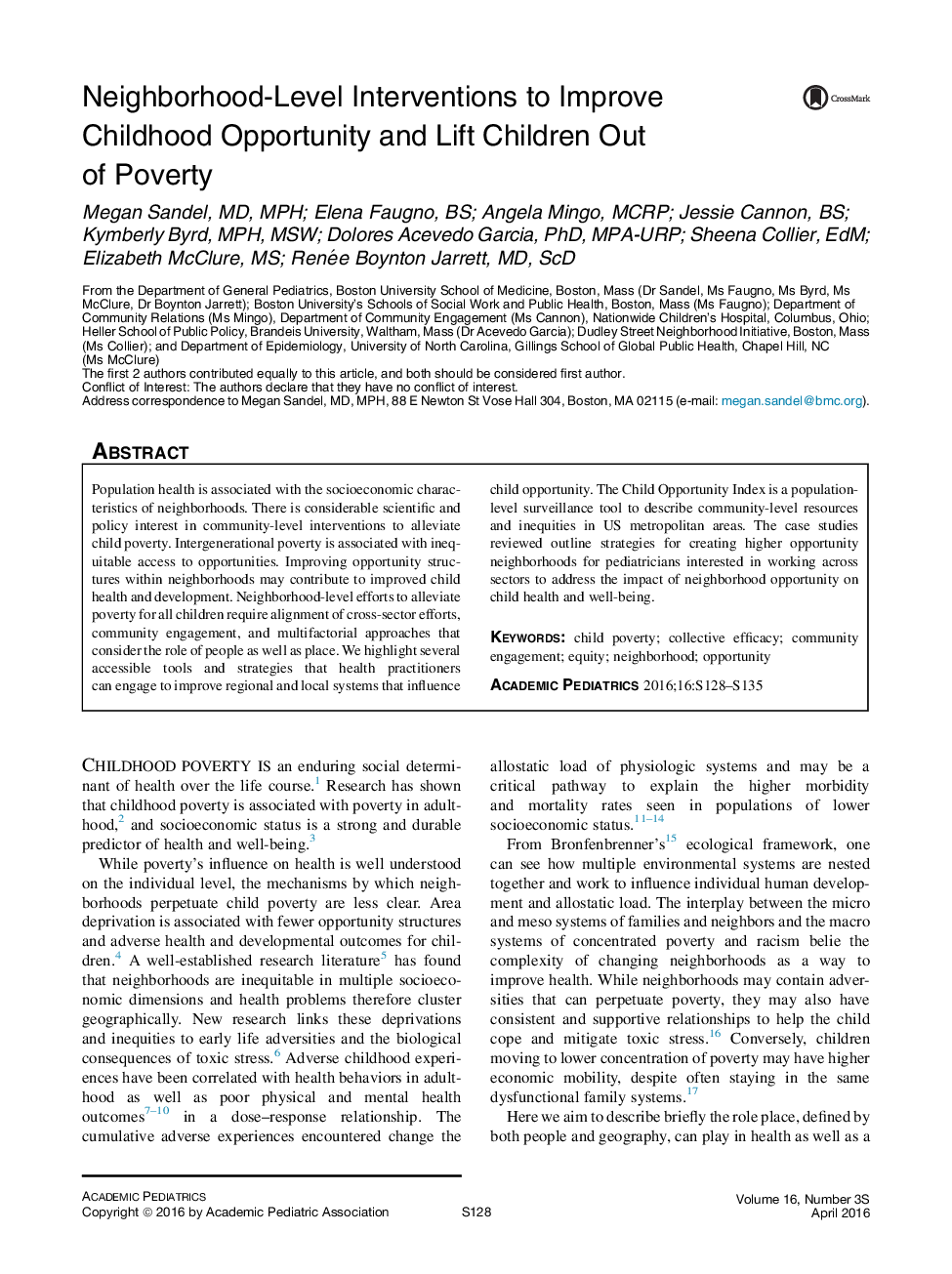| Article ID | Journal | Published Year | Pages | File Type |
|---|---|---|---|---|
| 4139335 | Academic Pediatrics | 2016 | 8 Pages |
Population health is associated with the socioeconomic characteristics of neighborhoods. There is considerable scientific and policy interest in community-level interventions to alleviate child poverty. Intergenerational poverty is associated with inequitable access to opportunities. Improving opportunity structures within neighborhoods may contribute to improved child health and development. Neighborhood-level efforts to alleviate poverty for all children require alignment of cross-sector efforts, community engagement, and multifactorial approaches that consider the role of people as well as place. We highlight several accessible tools and strategies that health practitioners can engage to improve regional and local systems that influence child opportunity. The Child Opportunity Index is a population-level surveillance tool to describe community-level resources and inequities in US metropolitan areas. The case studies reviewed outline strategies for creating higher opportunity neighborhoods for pediatricians interested in working across sectors to address the impact of neighborhood opportunity on child health and well-being.
